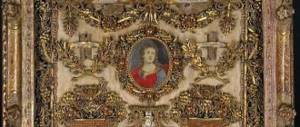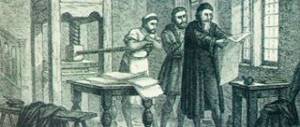The history of the watch
MBOU - “Gymnasium No. 65 named after Nikas Safronov.”
Project topic: Clocks and history
their origin.
Author
of the work :
Narozhny Stepan Olegovich,
student of 5B class.
Scientific
supervisor :
Zakharova Olga Fedorovna
a history teacher.
Ulyanovsk, 2017
Relevance of the topic :
watches are a universal invention of mankind that will never lose its relevance
Target
: study the history of watches from ancient times to the present.
Tasks
:
— study the cause and operating principle of the very first clocks created by man.
— conduct a study of how watches have changed and improved over time.
- study the types and advantages of modern watches.
Introduction.
The first science of time is astronomy. The results of observations in ancient observatories were used for agriculture and religious rites. There was a time when a calendar was enough for people. But crafts appeared, and the need arose to record the duration of technological processes. It took a clock, the purpose of which was to measure periods of time shorter than a day.
Thus, humanity came to the invention of watches. The process was long, filled with hard work from the best minds. The history of watches goes back many centuries; it is the oldest invention of mankind. From a stick stuck in the ground to an ultra-precise chronometer, the journey is hundreds of generations long. If we make a rating of the achievements of human civilization, then in the category “great inventions” the clock will be in second place after the wheel.
The history of watches is divided into two large periods. The first is several thousand years long, the second is less than one. 1. The history of the emergence of clocks called simplest. This category includes solar, water, fire and sand devices. The period ends with the study of mechanical clocks of the pre-pendulum period. These were medieval chimes. 2. A new history of clocks, beginning with the invention of the pendulum and balance, which marked the beginning of the development of classical oscillatory chronometry. This period is not over yet.
Main part.
The very first clocks are the so-called living clocks
. Birds and plants act as living clocks. The rooster is also a “clock”. He shows everyone that morning has already come. This is a living alarm clock! If the nightingale sings, it means it’s still night; he sings first. Later the lark sings. At five in the morning there is a finch. The sparrow starts singing - tweeting at 7 am! Plant clocks open their petals and close them strictly at a certain time. For example, bindweed opens at 9 am and closes at 8 pm. Buttercup opens its flowers at 7-8 am and closes at 3-4 pm. Dandelions open at 5am sharp. People carefully observed flowers and herbs and could tell what time it was.
One of the first clocks invented by man was a sundial.
The first description of a sundial was found during excavations of a tomb dating from 1306-1290. BC e. in Ancient Egypt. A sundial is the simplest device for keeping time; they are usually called by their ancient Greek name - Gnomon. The principle of “working” of a sundial is based on the shadow that forms in the light of the sun. A small rod (gnomon) was fixed on a flat stone (kadran), carved with lines - a dial, the hour hand was the shadow of the gnomon. With such a clock it was possible to determine the time to the nearest hour. Of course, such a watch could only be used during daylight hours.
Sundial Luxor Obelisk The first gnomons were complex architectural structures in the form of tall obelisks, surrounded by a semicircle of stone pillars, which were a reference point for determining time. Egypt has the most favorable climatic conditions for measuring time using a sundial, so it seems more reliable that the first sundial appeared here. Obelisks served at the same time to honor the cult of the Sun God. These sacred obelisks stood, as a rule, in front of the entrances to temples. Ancient clocks in Egypt.
Attempts to measure night time led to the creation of fire clocks
. Fire clocks measured time by the amount of oil burned in a lamp or wax in a candle. The prevalence of fire clocks was so great that the candle became the unit of measurement of time; To the question: “What time is it?” followed by the answer: “Two candles”; which corresponded to approximately three o'clock in the morning, since the whole night was divided into three candles. These watches were cheap and convenient, but inaccurate. It was during these years that the alarm clock was first invented. Naturally he was fiery. In this clock, metal balls were suspended from a spiral or stick in certain places, which, when the spiral (stick) burned, fell into a porcelain vase, producing a loud ringing. The disadvantage of such watches was the ineffectiveness of their use during the daytime, and in addition, the accuracy of their readings was low due to the different rates of oil and wax burnout for different lamps and candles.
The sun and fire clocks were replaced by water clocks
. They were more accurate and perfect. This watch worked reliably both day and night. Their design was simple: a vessel with a hole in the bottom and divisions on the walls, along which you can monitor the drop in water level. The vessel was usually made of metal, clay or glass, filled with water, which flowed out slowly, drop by drop, lowering the water level, and the divisions on the vessel determined what time it was. Water clocks quickly became popular. They were used both at home and in the military, government agencies, and schools. They were at racetracks, stadiums and courthouses. The water clock was called "Clepsydra", which in Greek means "The Thief." It is to the clepsydra that we owe the appearance of the expression “The Passage of Time.”
The first hourglass
appeared relatively recently - only a thousand years ago. This is a fairly accurate device for measuring time, but it has one significant drawback - it can only be used to measure small intervals of time. However, people continue to use hourglasses in everyday life to this day. In fact, an hourglass is the simplest device for keeping time. They do not have a complex mechanism that can break down or begin to malfunction, but they do not depend, for example, on the presence of the sun. An hourglass of a classic design is two vessels that are connected by a narrow neck, mounted on a stable stand. A certain amount of sand is poured into one of them. Depending on the volume of the vessels themselves, the hourglass can measure intervals of several seconds or minutes.
The first mechanical watch
were invented sometime around 1350. In the center of the round dial there was a pointer connected by an axis to a system of gears and gears. A weight tied with a rope to a reel turned it by gravity, which, in turn, set the entire system in motion, turning the arrow around its axis. The first clocks appeared in medieval monasteries to call monks to services. The oldest clock in use today was installed on the Cathedral of the English city of Salisbury. And for more than six hundred years they have been regularly keeping time. By the middle of the 16th century, most European cities had publicly accessible clocks on town halls, towers and cathedrals. In the middle of the 15th century, room clocks appeared. Initially, they were too bulky and were driven by a weight. The running length of such watches was only 12 hours, and then the load had to be tightened.
For the further improvement of clocks, the discovery of the laws of pendulum oscillation made by Galileo, who came up with the idea of creating a mechanical pendulum clock
. The actual design of such a watch appeared in 1658 thanks to the talented Dutch inventor and scientist Christian Huygens (1629-1695). He also invented the balance regulator, which made it possible to create pocket and wrist watches. Moreover, the basic design diagram of which has been preserved almost unchanged in modern watches.
Quartz watch.
Further improvement of instruments for measuring time occurred like an avalanche. The development of electronics and radio engineering paved the way for the emergence of quartz watches. Their work is based on the piezoelectric effect.
Quartz watches have a mechanism consisting of an electronic unit and a so-called stepper motor. How it works? The engine, receiving a signal from the electronic unit, moves the arrows. Instead of the usual dial, quartz watches can use a digital display. We call them electronic. In the West - quartz with digital display. This doesn't change the essence.
In fact, a quartz watch is a mini-computer. It is very easy to add additional functions: stopwatch, moon phase indicator, calendar, alarm clock. At the same time, the price of watches, unlike mechanics, does not increase so much. This makes them more accessible.
Quartz watches are very accurate. Their error is ±15 seconds/month. It is enough to correct instrument readings twice a year.
Instead of the usual dial, quartz watches can use a digital display. We call them electronic
. In the West - quartz with digital display. This doesn't change the essence.
Gradually, electronic alarm clocks began to be built into various household appliances and devices, allowing them to be controlled (turned on, off) when a certain time comes. Electronic watches have become an indispensable element of such devices as VCRs, computers, cell phones, and multicookers.
I would especially like to say about quantum (atomic) clocks.
It is a time measuring device that uses vibrations of atoms or molecules as a periodic process. Atomic clocks are important in navigation. Determining the position of spaceships, satellites, ballistic missiles, aircraft, submarines, as well as the movement of cars automatically via satellite communications (GPS, GLONASS, Galileo) is unthinkable without atomic clocks.
Another of the latest inventions of mankind is the chasophone or the so-called “smart watch”.
With the help of such a watch, you can not only find out the time, use an alarm clock and timer, but also make calls like a regular phone, take photos, write notes, and use an organizer.
Another outlandish invention is a flying alarm clock
. The moment it is triggered, it takes off. In order to turn it off, you must first catch it and bring it to the base. When you do this, you will definitely not sleep, and neither will your neighbors, because the alarm clock emits a sound signal of 95 dB.
Conclusions:
-Man has always sought to control time and came up with various devices for this, for example, hourglasses and sundials.
-In the era of mechanics, the simplest watches were replaced by mechanical, then quartz, and electronic watches. Every year the watches changed and improved more and more.
-Currently, there are many types of watches with different functions, these are atomic clocks, time phones, and flying alarm clocks... But science does not stand still and perhaps very soon we will learn about a new type of watch.
Conclusion.
The topic of measuring time has always worried humanity. People came up with various proverbs about time: “Time for business is time for fun,” “If you miss an hour, you won’t make it up in a year,” “Every vegetable has its time.” They talk about the timeliness of every task, the importance of every hour. Nowadays this is called time management or the art of time management. Therefore, watches have been and will be relevant at all times.
I wish the clock would help us appreciate every minute of our time!
Bibliography:
1. Time and its measurement, 1987 - F.S. Zavelsky
2. Wristwatches complete reference book, publishing house Moscow-Astrel 2005, Paolo de Vecchi and Alberto Uglietti
3. Clock. From gnomon to atomic clocks - Stanislav Michal, M.: Znanie, 1983.
4. Erik Ubelaker “Time”. "The Word", 1990.
5. World clock. — Elena Dubrovskaya, Avanta, 2008
A brief history of the creation and development of watches
A brief history of the creation and development of watches
The history of watch making goes back several thousand years. For a long time, man has tried to measure time, first by the day and night luminaries and stars, then with the help of primitive devices and, finally, using modern high-precision complex mechanisms, electronics and even nuclear physics.
The history of watch development is the continuous improvement of time measurement accuracy. It is reliably known that in Ancient Egypt they measured time in a day, dividing it into two periods of 12 hours. There is also evidence that the modern sexagesimal measurement model came from the Sumerian Kingdom around 2000 BC.
Sundial.
It is generally accepted that the history of watchmaking begins with the invention of the sundial or gnomon. With such a clock it was possible to measure only daytime, since the principle of their operation was based on the dependence of the location and length of the shadow on the position of the sun.
Water clock.
The history of the creation of water clocks begins in Ancient Persia and China around 2500 - 1600 BC. And from there, quite likely with trade caravans, water clocks were brought to Egypt and Greece.
Fire clock.
Fire clocks were used about 3000 years ago in China, during the time of the first emperor of this country named Fo-hi. Fire watches were widespread in Japan and Persia.
Hourglass.
The creation of the hourglass dates back to approximately the 3rd century BC during the time of the scientist Archimedes. Ancient Greece has long been considered the place of their invention, but some archaeological finds suggest that the first hourglass was created by residents of the Middle East.
Mechanical watches.
The history of the creation of the first mechanical watch begins in 725 AD in China and is a significant event in the history of watch development. Although, even earlier, presumably in the 2nd century BC in Ancient Greece, a mechanism was created that made it possible to track the positions of celestial bodies with great accuracy. This mechanism consisted of 30 gears placed in a wooden case, on the front and back sides of which there were dials with arrows. This ancient mechanical calendar can be defined as the prototype of the first mechanical watch.
Electric clock.
The discovery of electricity marks the beginning of the history of electric clocks, invented in the mid-19th century. The creation and further development of electric clocks put an end to the inconvenience of synchronizing time in different parts of the world.
In 1847, the world was presented with an electric clock developed by the Englishman A. Bain, which was based on the following principle: a pendulum swinging by means of an electromagnet periodically closed the contact, and an electromagnetic counter, which was connected by a system of gears to the clock hands, read and summed up the number of oscillations.
Atomic clock.
In 1955, the history of watch development took a sharp turn. Briton Louis Essen announced the creation of the first atomic clock using cesium-133. They had unprecedented accuracy. The error was one second per million years. The device began to be considered a cesium frequency standard. The standard of atomic clocks has become the world standard of time.
Digital Watch.
The beginning of the 70s of the 20th century is the point of the history of the creation and development of electronic watches, which display time not with hands, but with the help of LEDs, which, although they were invented in the mid-20s, found practical application only decades later.
Presentation “Types of watches”
Presentation
on the topic of:
“SUCH DIFFERENT WATCHES”
Prepared by: student of 3 “A” class
Chikomazova Anna
What's happened?
We know everything - when it’s time for you to sleep
and when it’s time to get up. This is just a word - so, We are in a hurry, tick-tock, tick-tock. We walk at night, we walk during the day, We never get tired.
A clock is a device for determining the current time of day and measuring the duration of time intervals.
Sundial
The very first clock known to mankind was the sun clock. The first people were guided by the position of the sun, and therefore time depended on it.
The sundial can be drawn on the sand or on the ground, but can be made from scrap materials. The sundial has an arrow pointing north. To draw or make a sundial, just attach the arrow to the dial and position it in the north direction. The shadow of the arrow will show the exact time.
Fire clock
Fire clocks first appeared in China. They consisted of a spiral or stick of flammable material with suspended metal balls. When the material burned, the balls fell into the porcelain vase, producing a ringing sound. Subsequently, a type of fire clock appeared in Europe. Here candles were used, on which marks were evenly applied. The distance between the marks served as the unit of time.
Water clock
Water clocks were known in Ancient Egypt, Judea, Babylon, Greece, and China. The Greeks called the water clock clepsydra, which means “water thief.” With the help of these clocks, time was determined by the speed of water flowing from one vessel to another, equipped with marks, the water level in which showed the time. The first alarm clock on earth was also a water alarm clock - both an alarm clock and a school bell at the same time. The ancient Greek philosopher Plato is considered its inventor.
Hourglass
This is an unusual watch. An hourglass does not have a dial. They consist of two communicating vessels into which sand is poured. When an hourglass is turned over, sand pours out of one container into another over a certain amount of time.
Vintage cuckoo clock
Today, you can only find an antique cuckoo clock in your grandparents’ house. Few people use them because antique cuckoo clocks are very bulky and take up a lot of space. In such a watch, every hour an artificial cuckoo peeked out from the dial and made sounds. That is why such a mechanism is today called an “antique cuckoo clock.”
Wall Clock
There are also wall clocks. They don't take up as much space as an antique grandfather cuckoo clock because they hang on the wall. Wall clocks can be of any shape, and the dial can be of any size. Surely there is a wall clock in every home.
Wrist watch
In the beginning, wristwatches were only women's, ornate jewelry. In the 90s of the 19th century, military men began to use wristwatches.
Tower clock
The history of tower clocks in Moscow dates back to the distant year 1404; they were first installed in the Moscow Kremlin. The most famous clock in Russia is the Kremlin chimes, installed on the Spasskaya Tower of the Moscow Kremlin. The first documentary evidence of the presence of a clock on the tower dates back to 1585.
The modern Kremlin chimes were installed in 1851. Russia's main clock is eight years older than its British counterpart. The clock built into the tower has four identical dials, one located on each side of the Spasskaya Tower. The diameter of the dial of the Kremlin clock is not much smaller than the English Big Ben - it is 6 meters 12 centimeters. The metal hour hand is 2.97 meters long, the minute hand is 3.27 meters long, and the chiming pendulum weighs 32 kilograms.
This is the history of ordinary watches that have become so familiar to all of us today. And who knows what they will become... In the meantime, the device for measuring time quickly counts down the seconds and regularly serves a person in all areas of his complex and eventful life.
THANK YOU
FOR YOUR ATTENTION!







